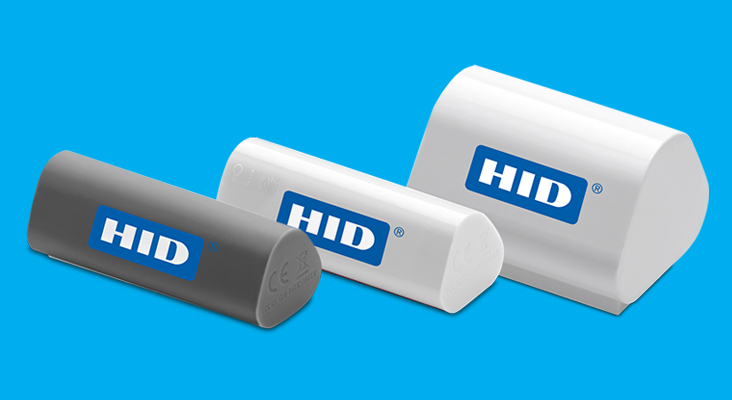Why RFID Is Such a Cool Technology
The theme of last year’s World Refrigeration Day which happened on June 26, 2022, was Cooling Matters, focusing on the importance of refrigeration for food safety, medicines, data centers and air conditioning. We’ll explore below how cooling really does matter for our health, welfare, productivity and economy.
Food Safety
Our access to fresh food depends on an unbroken supply chain of refrigerated production, transportation, storage and distribution. Maintaining perishable goods at lower temperatures slows the growth of harmful bacteria that cause foodstuffs to decay, reduces food waste and protects consumers from food poisoning. The global cold chain market was worth $203 billion in 2021 and is expected to reach $293 billion by the end of 2027.
Quality control in cold chain management depends on a combination of RFID tags to track foodstuffs in transit and storage, as well as temperature data logging to ensure that thawing — which could compromise the quality and safety of the goods — has not occurred at any point in the chain. Specialized hardware, software and mechanical design are required to create RFID tags that can withstand sub-zero temperatures.
For example, HID Sense Asset Quuppa tags are used by a large food processing company in the US to track frozen chickens as they are moved in and out of refrigeration units. For this application, we developed battery-powered Bluetooth® Low Energy IoT tags that are able to withstand cold chamber blasts at -30°C for an hour at a time and can operate for several years within refrigerated environments. As cold degrades battery performance and makes plastics brittle and prone to breakage on impact, the encasement had to be made from rugged materials that could operate at -40°C, to protect the tag and extend the life of the battery. The tag firmware also needed to implement intelligent power management algorithms to allow the RFID tag to continue operating for a number of years on reduced battery capacity.
HID has well-established temperature sensing devices which have a number of applications in the cold chain sector, including tags which are used for monitoring and confirming that fast food chain restaurant refrigerators remain within specified temperatures for food safety.
Medicines
Many medicines contain chemicals which change properties and lose their effectiveness at higher temperatures. In addition, vaccines can become inert if they are stored incorrectly. Different vaccines require various levels of refrigeration. For example, the Ebola and Pfizer-BioNTech COVID-19 vaccines require ultra-low cooling down to -70°C, while the zoster and varicella vaccinations need to be frozen to -20°C. Influenza vaccinations only require refrigeration between 2°C and 8°C.
When we consider the fact that 50% of the world’s vaccines and 20% of generic medicines are manufactured in India, where temperatures can reach 50°C / 122°F, it’s clear that refrigeration of medicines and cold chain management are absolutely critical for world health programs.
Two years ago we contributed to the creation of a vaccine management system with our Danish partner, Lyngsoe Systems, to ensure that COVID-19 vaccines were safely stored, handled and administered. Lyngsoe Systems developed process monitoring software and a mobile workstation with advanced IT RFID reading equipment, edge server and Bluetooth® Low Energy refrigeration temperature monitoring equipment.
To support this application, HID developed state-of-the-art RFID sensor labels which measure both the temperature and volume of the liquid contained within individual vaccine vials to ensure that the correct, safe dosage is administered to each person. The battery-free, passive RFID labels use our custom-developed antenna and Axzon’s Magnus® Chameleon™ Engine technology to measure temperature, moisture and liquid volume.
To combat counterfeiting, the labels also provide a unique identifier and digital signature which expires after use, to reassure medical staff that they are administering genuine vaccines.

The Lyngsoe/HID/Axzon solution reads up to 200 vials simultaneously as they are received and transferred to fridges and freezers prior to dilution and administration, thus demonstrating how pharmaceutical companies can use low-cost RFID labels to deliver an end-to-end vaccine cold management system that saves time, cost and lives.
Data Centers
Maintaining servers at their optimal working temperature has become critical to our lifestyles and economy as we work, communicate, learn and shop online, and as more of our vital services are digitized. Most data center operators find that the optimal temperature range for servers is between 73–75°F / 23°C. Having the ability to continuously monitor the temperature of server assets contributes to business continuity by enabling hot spots to be identified and addressed early before they lead to server outage, data loss and disruption of essential services.
Millions of our passive RFID asset location tags are already used in data centers around the world. In March 2022, HID extended its family of Sense condition monitoring devices with a range of passive printable on-metal and off-metal labels and ceramic tags which incorporate the Magnus M3D chip and accurately read live temperatures up to 125°C / 257°F and down to -70°C / -94°F. The battery-free Sense devices and labels also indicate the presence of moisture and are ideal for monitoring the temperature of servers throughout their lifespan.
Air Conditioning
As we swelter through the summer months, spare a thought for the HVAC engineers who work to keep our offices, shops, gyms, restaurants and cinemas at a comfortable temperature.
Predictive maintenance allows field service personnel to schedule their visits to avoid costly downtime. HID Condition Monitoring wirelessly provides real-time motor vibration and temperature data via the Bluzone™ cloud services platform. HID Industrial BEEKs™ beacons attached to HVAC motors provide live temperature and motor vibration data, analytics and visualization, to alert maintenance engineers when assets are operating below par and temperatures are rising, before they reach the point of failure.

As World Refrigeration Day sets out to remind us, cooling really is critical for our health, safety, productivity, welfare and economy, and RFID plays its part in every scenario.
For a deeper dive into how HID’s sensors integrate with industrial equipment from refrigeration to generators and more, watch our webinar, Efficient and Scalable IoT Condition Monitoring.
David Owen is an integrated Marketing Manager and brand builder with both professional agency and client-side experience. His client-side experience has included the Commercial Property sector with Vail Williams LLP and before that was in the conference, meeting, events and golf industry. In 2019, David joined Omni-ID (now an HID Global company). David and his family reside in the quiet countryside of Surrey England, where he likes to enjoy a round of golf.
